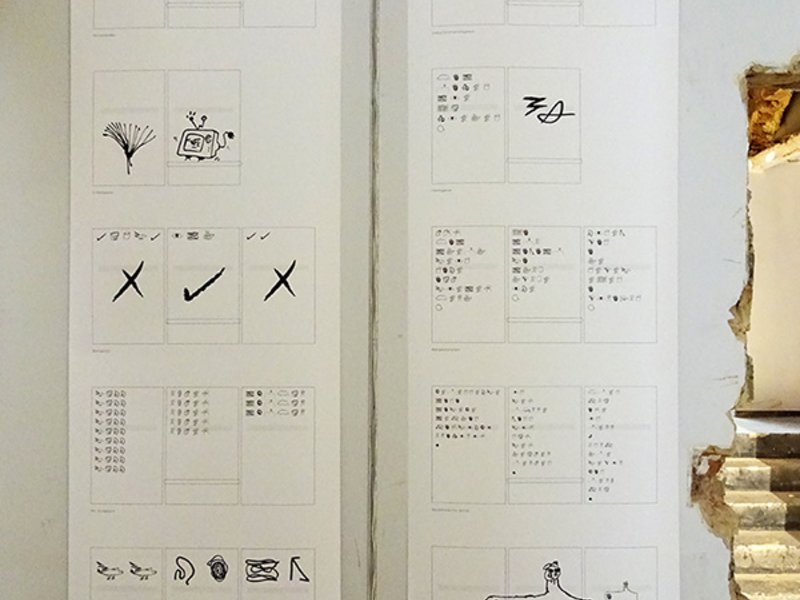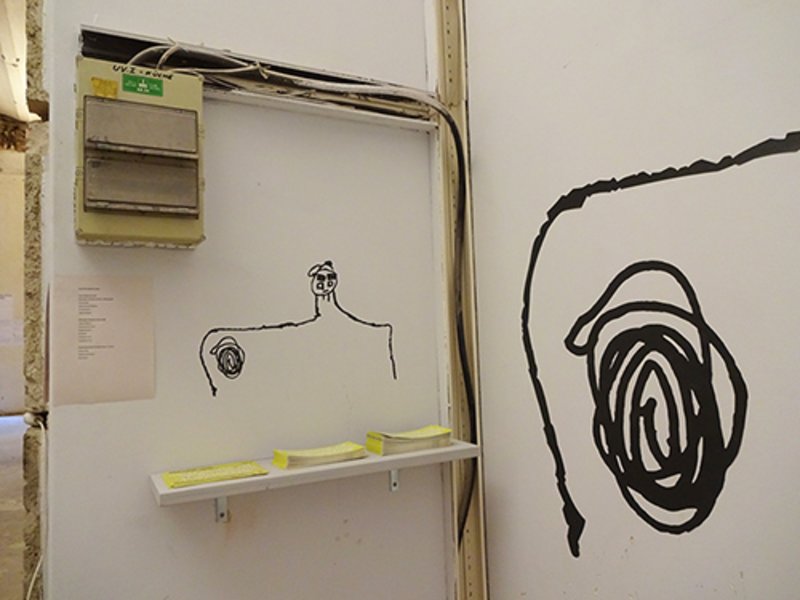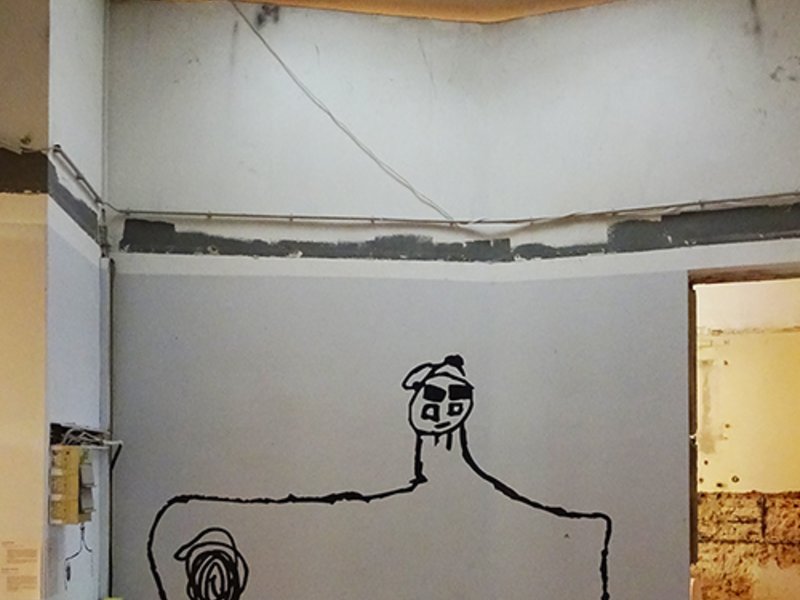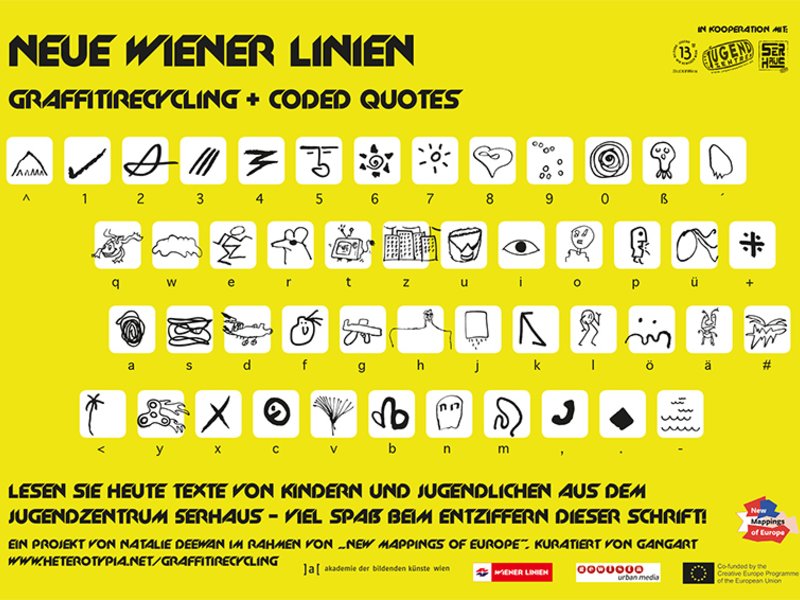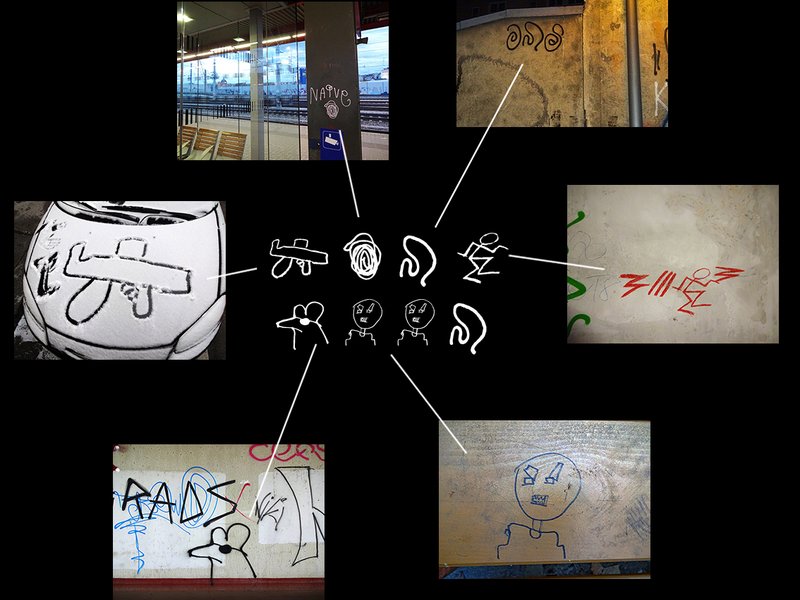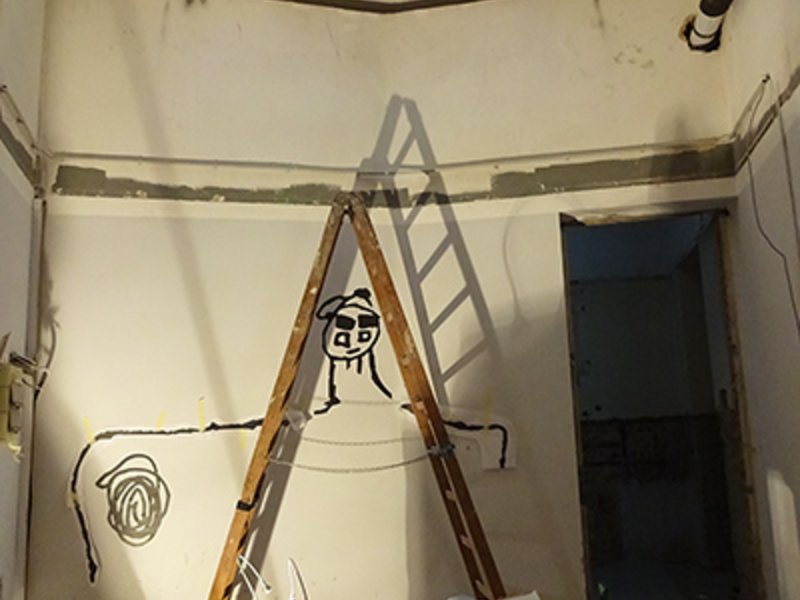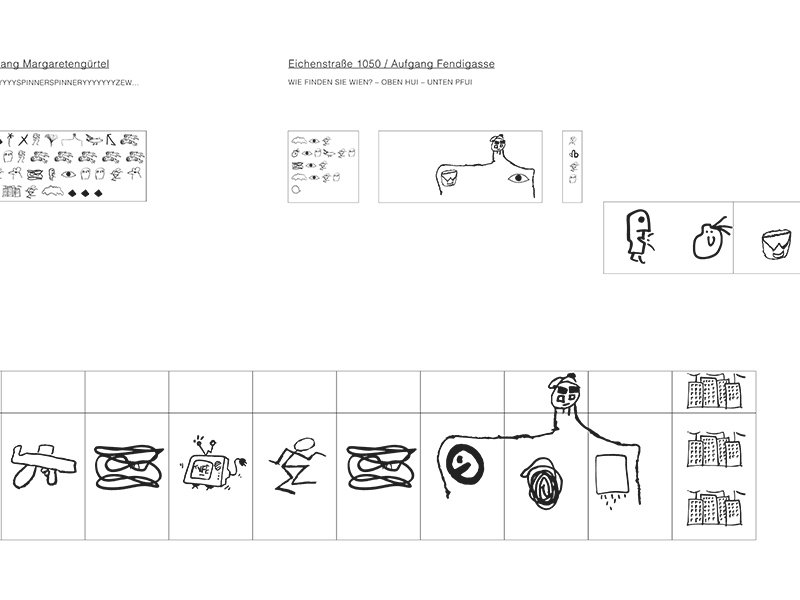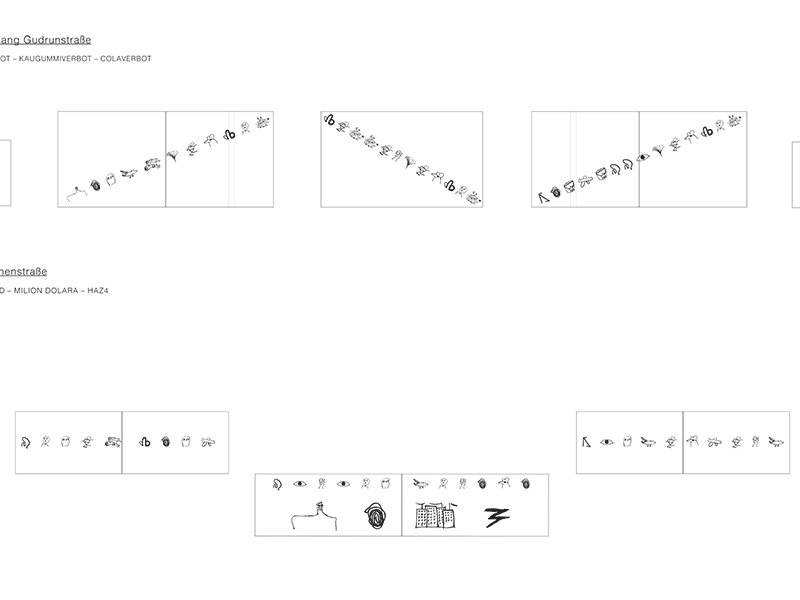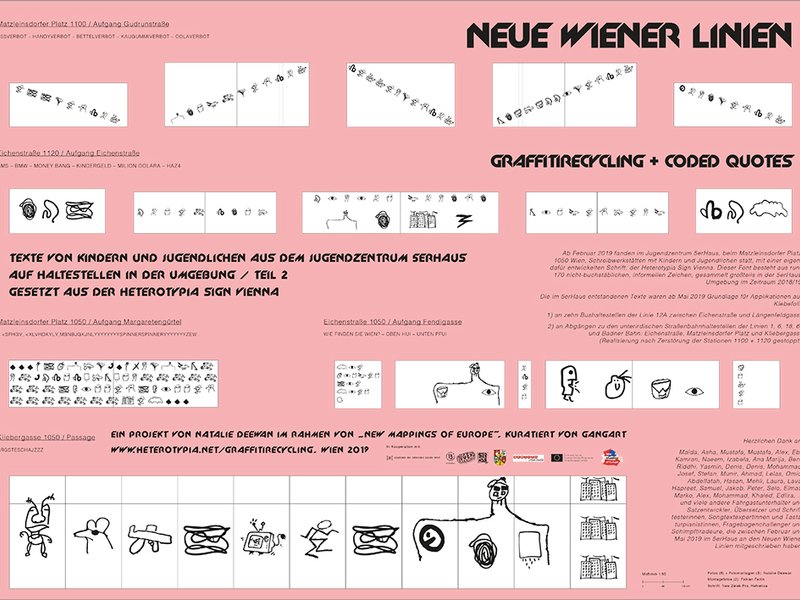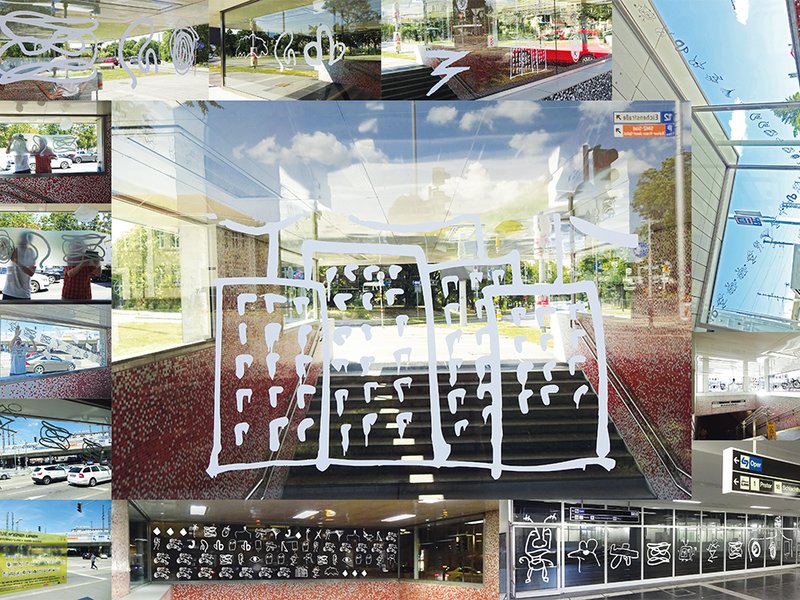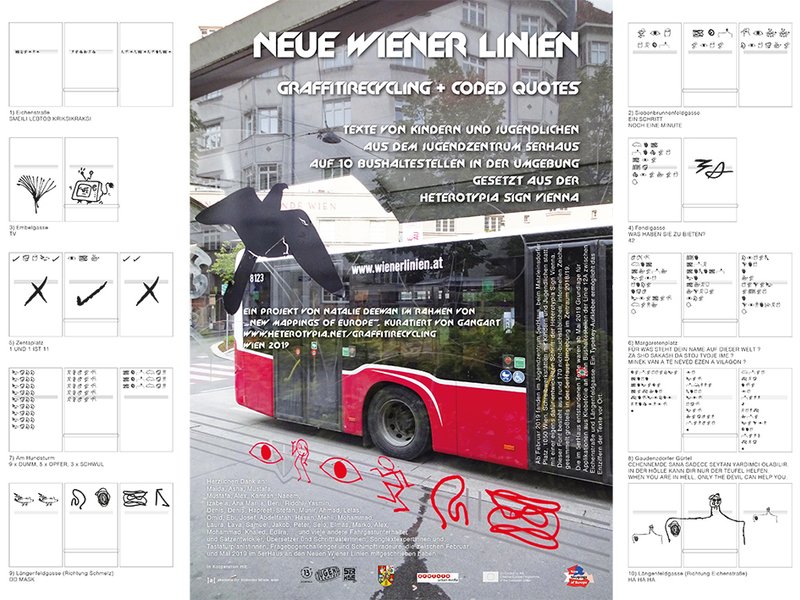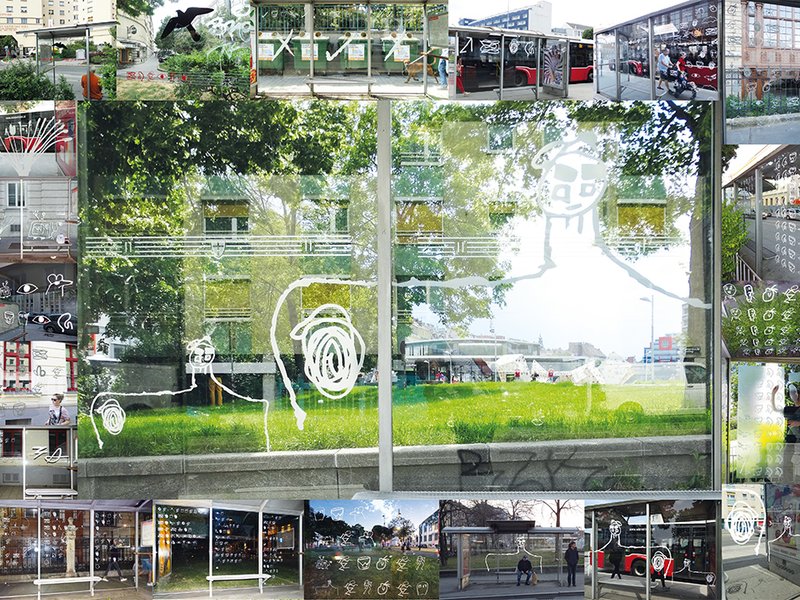Graffiti Recycling
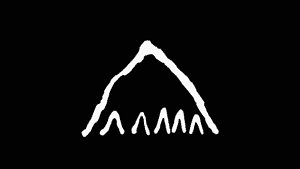
Heterotypia Sign Vienna is a free downloadable font by artist / writer / activist Natalie Deewan, consisting of 183 non-literary informal signs, that have been collected, digitised and fontificated from ephemeral inscriptions and labellings in Vienna's 5th district Margareten in early 2019. It has been generated in collaboration with the young constituents of 5erHaus, a youth center of the city of Vienna, and applied as basis for extensive writing workshops with them. Some of the results have returned to the streets in form of applications at the glas surfaces of bus shelters of line 12A. Feel free to download the font and use it on all your devices.
The Places
The youth community center “5er Haus” is located in Grünwald Strasse 4, in the 5th Viennese district, Margareten. The 5er Haus was established in 1964. During its fifty-year existence it influenced generations of children and youths, giving them experiences for life in socio-historical, (sub)cultural and political development and shifting. As a part of the nonprofit-organisation Wiener Jugendzentren (Viennese Youth Centers), est. 1978, the duty of 5er Haus is based on the impact on individual, socio-spatial and societal levels. The goals of 5er Haus are to support personality and identity development among children and youths enabling and creating social spaces, equal opportunities and access in society. Besides support and self-organisation, gender- and topic-oriented work, integrative learning and individual counselling is also on the agenda. The 5er Haus offers a basic free space, without time schedules, compulsory consumption or pressure to perform. The Theodor-Körner-Hof is a social-residential complex built by architects Ladislaus Hruska and Kurt Schlauss for „Red Vienna” between 1951—1955, on the plot of a former hay- and straw market. The compound stretches out next to 5er Haus, with the 20-floor high „Matzleinsdorfer Tower” in its center. The fourteen buildings spread out between Margaretengürtel and Reinprechtsdorfer Strasse contain 1.219 community apartments, large yards and plenty of green area. Many of the children and youths at 5er Haus are living in Theodor-Körner-Hof. If you’re heading out from 5er Haus, down on the adjoining Reinprechtsdorfer Strasse about 400 meters towards the city center, and turn onto Vogelsanggasse, under Nr. 36 you will find a large brick building with dark green doors, overgrown with ivy. Today this building gives home to the “Museum of Austrian Society and Economics”, which in 1948 became the successor of Otto Neurath’s (1882—1945) “Social- and Economic Museum”.
Text, Image and Knowledge
Otto Neurath was a national economist and economic theorist, who founded this institution for the purposes of popular education. It presented social and economical facts through graphic symbols. This method became well-known worldwide as the “Vienna Method of Pictorial Statistics” for transforming knowledge, thus enabling the democratisation of science. The symbols were to visualise social, economic or political facts and correlations, without the limitations of terminology or the need for specific education. Together with mathematician and physicist Marie Reidemeister (1898—1986) and graphic designer and artist Gerd Arntz (1900—1988) they set themselves to collect, transform and explain socio-scientific statistics data collected by scientists. Marie Reidemeister selected the data to be represented and then worked on the method of visual representation with the graphic department to transform it into a digestible form. Gerd Arntz designed the symbols and gave a graphic shape to the transformed content. Neurath, Reidemeister and Arntz emigrated to The Hague and later to Great Britain, where they founded the ISOTYPE (International Systeme of Typographic Picture Education) Institute. Research into methods of transformation and graphic language that supports emancipation through enlightening and knowledge had been carried out here until the 1980’s.
The Project
The Viennese artist Natalie Deewan also used transformation between text and images as a tool in her project “New Lines of Wiener Linien. Graffiti-Recycling & Codes Quotes”, on which she worked with children and youths from 5er Haus. They collected informal symbols, tags, graffiti and drawings in the public spaces of the 5th district and beyond. Then a Font Creator generated a font based on the collected, non-literary signs and symbols. Between January and May Natalie held writing workshops at 5er Haus, where the children and youths could freely take part between their pool- and chess games, coming and going. They created words, sentences and even texts using the code-alphabet of the public space. In cooperation with the Wiener Linien, the symbol-texts printed on adhesive foils were applied on bus stops all around the 5th district. Here they can be re-discovered and deciphered with the help of a font-translation key. They invite the impatiently waiting and the passers-by to interrupt their daily ways and stop for a moment. In the public space where Otto Neurath presented objective knowledge in a simplified, reduced and systematised way, Natalie Deewan works in a pluralising and open manner. She transforms the subjective knowledge of children and youths, that expresses their experiences, ideas, multi-lingual environment and creativity from a text level into a visual language- and symbol level. She creates the circumstances to discover and interpret these. Deewan works in circular, processual and dynamic ways as she publicises and promotes hidden forms of knowledge on public surfaces. She borrows images from different street artists and activists, that used this surface previously to express their ideas. She gives these images a new function and meaning, then brings them back into the public space. Thereby she brings social environment and knowledge into the 5er Haus and with cooperation of the children and youths she takes it back out into the public space in a different form. Thus, her project takes place between social sciences, social work and art.
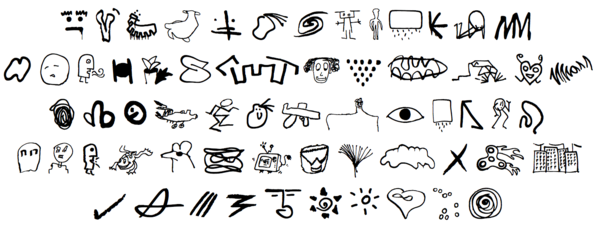
Public Space as a Symbolic Space for Representation
The project adopts social and physical spaces and transforms them. The children and youths use these spaces to ask questions and to make statements. The representation of the diverse realities of their lives, experiences and knowledge turns the public space into a space for communication and opportunity. The demand for this also reflects further questions about belonging, borders and identity. These are topics being discussed over and over in Theodor-Körner-Hof as well as in 5er Haus and possibly find their best expression in the coded sentence of a participating girl: What does my name mean in the world?
— Hannah Reiner, New Lines of Wiener Linien Graffiti-Recycling & Codes Quotes by Natalie Deewan
